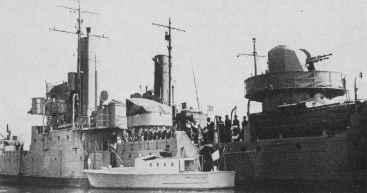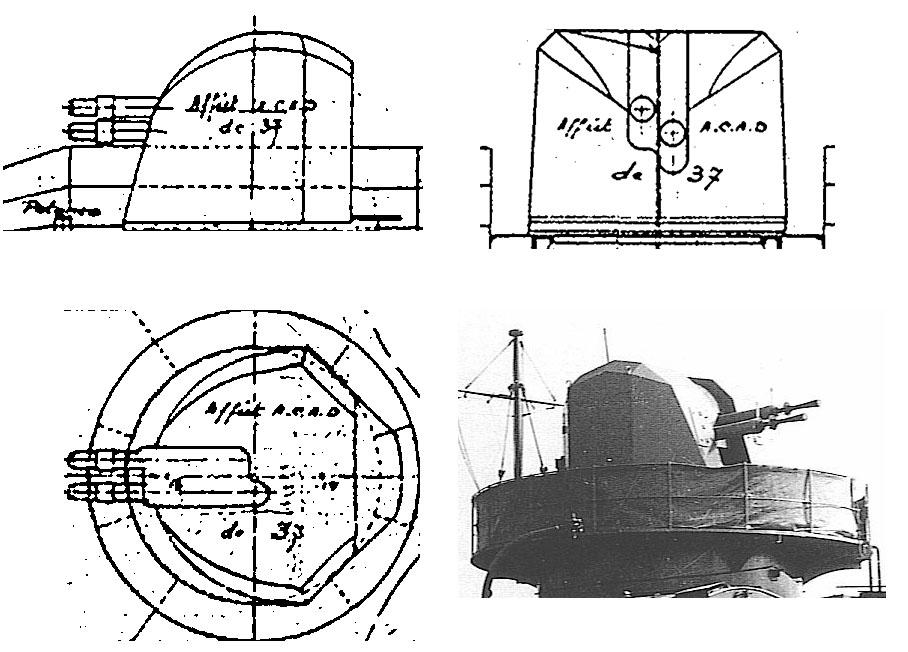|
Each gun had a pusher hoist for the six-round magazines. A remote director with a 2-meter rangefinder was used for RPC together with Sautter-Harlé electric servo-motors. However, the guns were controlled only in train, elevation was still manually operated. For some ships, including Richelieu, it was planned to have each director control two twin mounts. A note on sources: In "Naval Weapons of World War Two" this gun is described as being 48 calibers long while in "French Battleships: 1922 - 1956" it is described as being 70 calibers long. From an examination of the photographs below and those of the 37 mm/50 Model 1933, I have decided that 70 calibers is probably correct. There was one further 37 mm gun that was under consideration at the time the war started, the 37 mm zénithaux (zenith). This was a Hotchkiss design for a quadruple mounting intended for use against dive bombers. This mounting was unusual in that the guns could not depress past +45 degrees. The mounting would have been countersunk in the deck and loaded from beneath, similar in concept to the British BD (Between Deck) designs. The surrender of France in 1940 halted development and this weapon never made it off the drawing board. Unless otherwise noted, the data that follows is for the 37 mm Model 1935. |

37 mm/48 Model 1935 on Patrol Sloop Amiens
in 1942
|

Sketches and close-up view of Amiens Mounting
|